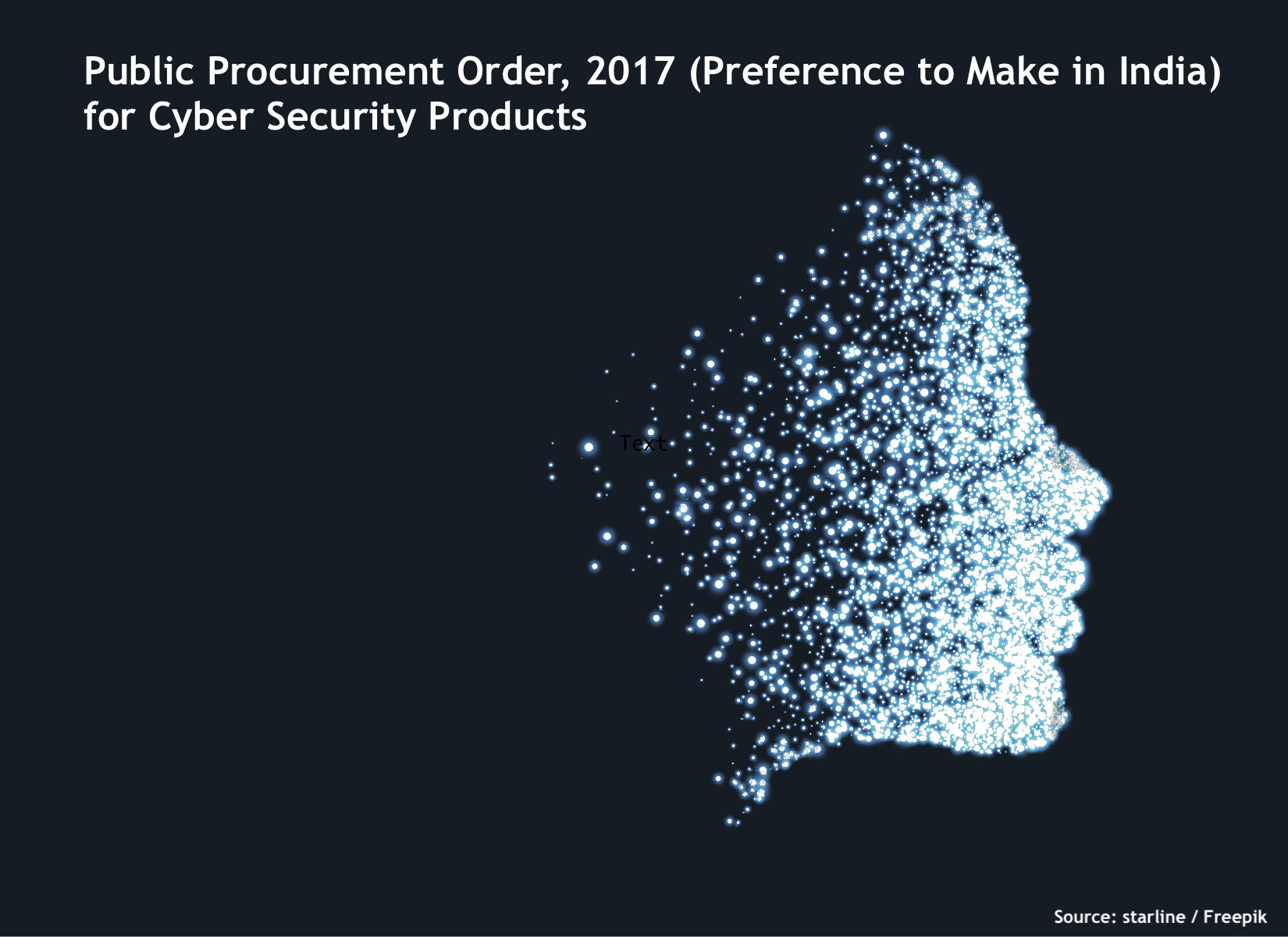This is our response to the Draft Drone Rules 2021 published by the Ministry of Civil Aviation on 14 July 2021.
Introduction
The potential commercial benefits that unmanned aviation can bring to an economy has been well established in several countries. A primary and immediate use-case for drones is in Geospatial data acquisition for various applications such as infrastructure planning, disaster management, resource mapping etc. In fact, as argued in the recently announced guidelines for Geospatial data, the availability of data and modern mapping technologies to Indian companies is crucial for achieving India’s policy aim of Atmanirbhar Bharat and the vision for a five trillion-dollar economy.
The current situation in India, however, is that the drone ecosystem is at a point of crisis where civilian operations are possible in theory, but extremely difficult in practice. Because the regulations in place are not possible to comply with, they have led to the creation of a black market. Illegally imported drones are not only significantly faster, cheaper and easier to fly but also far more easily acquired than attempting to go through the red tape of the previous regulations to acquire approved drones. Thus, rather than creating a system that incentivises legal use of drones, albeit imported, we’ve created a system that makes it near impossible for law-abiding citizens to follow the law of the land and discourages them from participating in the formal system. This not only compromises on the economic freedom of individuals and businesses but it also poses a great national security risk as evidenced in the recent spate of drone attacks. If we do not co-opt the good actors at the earliest, we are leaving our airspaces even more vulnerable to bad actors. This will also result in a failure to develop a world-class indigenous drone & counter-drone industry, thus not achieving our goals of an Atmanirbhar Bharat.
The Draft Drone Rules (henceforth the draft) have addressed some of these problems by radically simplifying and liberalising the administrative process but haven’t liberalised the flight operations. Unfortunately, closing only some of the gaps will not change the outcome. The draft rules leave open the same gaps that cause the black market to be preferred over the legal route.
With the three tenets of Ease-of-Business, Safety and Security in mind, it is our view that while the intention behind the draft rules is laudable, we feel that the following areas must be addressed to enable easy & safe drone operations in India:
- Remove Requirement of Certificate of Airworthiness: The draft mandates airworthiness certification for drones whereas, no appropriate standards have been developed, thus, making the mandate effectively impossible to comply with.
- Lack of Airspace segregation, zoning and altitude restrictions: The draft doesn’t mention any progressive action for permitting drone operations in controlled airspaces.
- Business confidentiality must be preserved: The prescribed rules for access to data is not in consonance with the Supreme Court Right to Privacy Judgement
- Lack of transparent Import Policy: This results in severe restrictions on the import of critical components thus disincentivizing indigenous development of drones in India
- Insurance & Training must be market-driven and not mandated: We must let market forces drive the setting up of specialised training schools & insurance products & once mature they may be mandated & accredited. This will result in the creation of higher quality services & a safer ecosystem.
- Fostering innovation and becoming Atmanirbhar:
A. Encouraging R&D: by earmarking airspace for testing for future drones
B. Encouraging the domestic drone manufacturing industry: through a system of incentives and disincentivizing imports should be inherent in the Drone Rules.
C. Recognition of Hobby flying: Hobbyists are a vital part of the innovation ecosystem; however, they are not adequately recognised and legitimized - Encouraging A Just Culture: Effective root cause analysis would encourage a safety-oriented approach to drone operations. Penal actions should be the last resort and dispute resolution should be the focus.
- Enabling Increased Safety & Security: NPNT and altitude restrictions would enhance safety and security manifold.
- No Clear Institutional Architecture: Like GSTN, NPCI, NHA, ISRO, and others a special purpose vehicle must be created to anchor the long-term success of Digital Sky in India based on an established concept of operations
- Lack of a Concept of Operations: Although drone categories have been defined, they have not been used adequately for incremental permissions, as in other countries; rather the draft appears to prefer a blank slate approach. The failure to adopt an incremental approach can arguably be considered as one of the root causes of the drone policy failures till date in India as regulations are being framed for too many varied considerations without adequate experience in any.
1. Airworthiness
In the long term, it is strategically crucial to India’s national interest to develop, own and promulgate standards, to serve as a vehicle for technology transfer and export. The mandatory requirement for certification of drone categories micro and up is the key to understanding why the draft does not really liberalise the drone industry. It would not be too out of place to state that the draft only creates the facade of liberalising drone operations – it is actually as much of a non-starter as the previous versions of regulations.
The standards for issuance of airworthiness certificates have not been specified yet the requirement has been stipulated as mandatory for all operations above nano category in the draft (pts 4-6). However, most of the current commercial operations are likely to happen in the micro and small categories. And for these categories, no standards have been specified by either EASA or FAA. EASA’s approach has been to let the manufacturer certify the drone-based on minimum equipment requirements. On the other hand, It is only fairly recently that the FAA has specified airworthiness criteria for BVLOS operations for a particular drone type of 40kg, and which it expanded to 10 drone types in November. Building standards is an onerous activity that necessitates a sizable number of drones having been tested and criteria derived therefrom. The only other recourse would be adopting standards published elsewhere, and as of date these are either absent (not being mandated in other countries) or actively being developed (cases noted earlier). Given the lack of international precedent, the stipulation for certificate of airworthiness in the draft needs to be eliminated, at least for micro and small category drones.
2. Airspace
One of the major concerns since the early days of policy formulation in India has been the definition of airspace and its control zones. All regulations till date, including the draft, require prior air traffic control approvals for drone operations in controlled zones. However, given that controlled airspace in India starts from the ground level for the controlled zones upto 30 nm around most airports (unlike many other countries where it starts at higher levels), it effectively means no drone operations are possible in the urban centres in the vicinity of airports in India. While the Green/Yellow/Red classification system is a starting point for Very Low-Level airspace classification, the draft does not move to enable the essential segregated airspace for drone operations up to an altitude limit of 500ft above ground level.
3. Business Confidentiality
In the domain of Privacy Law, India has taken significant strides to ensure protection of individual and commercial rights over data. The draft (pt 23.) in its current form seems to be out of alignment with this, allowing government and administrations access to potentially private and commercially sensitive information with carte blanche. The models of privacy adopted in other countries in unmanned aviation are often techno-legal in nature. It is recommended that DigitalSky/UTM-SP network data access be technically restricted to certain Stakeholder-Intent mappings: executing searches for Law Enforcement, audit for the DGCA, aviation safety investigations and for Air Traffic Control/ Management. This would need due elaboration in the detailed UTM policy complemented with a legal framework to penalise illegitimate data access.
4. Insurance
One constant hindrance to compliance is the requirement of liability transfer. While the principle of mitigating pilot and operator liability in this fashion is sound, the ground reality is that as of date, very few insurance products are available at reasonable prices. The reason behind it is that insurance companies have not been able to assess the risks of this nascent industry. Assuming the regulation is notified in its current form (pt 28), arguably affording a clean start at scaling up drone operations, we will continue in this vicious dependency loop in the absence of incentives to either end. Again, market forces will drive the development of this industry with customers driving the need for drone operators to obtain insurance for the respective operations. Therefore it is recommended that initially, insurance should not be mandated for any category or type of drone operations, and instead be driven by market or commercial necessity. Over a period of time, insurance may be mandated within the ecosystem.
Similar feedback has been shared by Insurers: “Though the regulator (aviation regulator) has made mandatory the third party insurance, the compensation to be on the lines of the Motor Vehicles Act is somewhat not in line with international practices,” the working group set up by Insurance Regulatory and Development Authority of India (IRDAI) said.”
5. Training
Currently, there’s a requirement of training with an authorized remote pilot training organization (RPTO) (pt 25), applicable for micro-commercial purposes and above (pt 24). While the intent is right, it should not be mandated at the initial stage. The reality is that there are very few RPTO’s that offer training and the cost of such training is often higher than the cost of the drones themselves, while quality is inconsistent. While the current draft rules try to address this problem, they do this with the assumption that liberalizing the requirements for establishing RPTO’s will solve this problem. While this incentivizes more RPTO’s to be established, it still does not incentivize quality and leaves in place the same bureaucratic process for registration. This has been the experience of the ecosystem so far. While it is certainly reasonable to expect that remote pilots should receive training, the goal of better informed and equipped pilotry is better achieved, at this time, if left to manufacturers and market participants to drive it.
There are currently two types of training – Type training and Airspace training. Type training can be driven by manufacturers in the early days, as is the current practice, and Airspace training can be achieved through an online quiz, based on a Concept of Operations. It is our view that customers of drones will have a natural incentive to seek training for their pilots, thereby creating the market need for better quality training schools. Furthermore, as manufacturers establish higher levels of standardization and commoditization, they will partner with training schools directly to ensure consistent quality. In the upcoming years, as the drone ecosystem grows more mature, it will become reasonable to revisit the need for mandating pilot training at approved training schools, and DGCA may create a program that accredits the various RPTOs.
6. Fostering innovation and becoming Atmanirbhar
6A. R&D
To encourage institutional research and development further, we recommend authorised R&D zones be designated, particularly where low population and large areas (like deserts, etc) are available, some key areas of experimentation being long range and logistics operations which might require exemptions from certain compliance requirements.
6B. Import policy
Rather than simply delegating the entire import policy to DGFT (pt 8), there needs to be a clear statement of the import guidelines in the rules based on the following principles in the current draft:
- No barriers for the importation of components and intermediary goods for local assembly, value addition and R&D activities
- Disincentivising import of finished drone products, both pre-assembled and Completely Knocked Down. Possible avenues could be imposition of special import duty as part of well-considered policy of “infant industry protection”, a policy used successfully in the recent past in South Korea and is considered a part of the policy of Atmanirbhar Bharat by the Principal Economic Advisor to the PM, Sanjeev Sanyal.
- Incentivising investments in the indigenous manufacturing industry by aligning public drone procurement with the Defence Acquisition Procedure (2020) and supplemented by targeted government programs such as PLI schemes and local component requirements, which will help realise the PM’s vision of ‘Make in India’ and “Atmanirbhar Bharat’.
- In the long term, developing incentives for assemblers to embed themselves into global value chains and start moving up the value chain by transitioning to local manufacturing and higher value addition in India, to be in line with the PM’s vision of Atmanirbhar Bharat. Some suggestions here would be prioritisation for locally manufactured drones for government contracts, shorter registration validity for non-locally manufactured drones etc.
6C. Hobby Fliers
While research and development within the confines of institutions is often encumbered by processes and resource availability, hobby and model flying has enjoyed a long history in manned aviation as a key type of activity where a large amount of innovation happens. Hobby clubs such as The Homebrew Computer Club, of which Steve Jobs and Wozniak were members, and NavLab at Carnegie Mellon University are instances out of which successful industries have taken off. Far from enabling hobby or recreational fliers, they are not even addressed in the draft, which would only limit indigenous technology development. Legally speaking, it would be bad in law to ban hobby flying activities considering hobby fliers enjoy privilege under the grandfathering rights. A solution could lie in recognising hobbyists & establishing hobby flying green zones which may be located particularly where low population and large areas are available. Alternatively, institution-based hobby flying clubs could be authorised with the mandate to regulate the drone use of members while ensuring compliance with national regulations. The responsibility of ensuring safe flying would rest with these registered hobby clubs as is the case in Europe and USA.
7. Encouraging A Just Culture
Implementation is the key to the success of any policy. One of the key factors in encouraging voluntary compliance is an effective means of rewarding the compliant actors while suitably penalising any intentional or harmful violations. Therefore, arguably, an important step could be to build such rewards and punishments. In the context of aviation safety and security, the key lies in effective investigation of any violation while fostering a non-punitive culture. Effective investigations enable suitable corrective actions whilst minimal penal actions encourage voluntary reporting of infringements and potential safety concerns. ICAO encourages a just and non-punitive culture to enhance safety. Penal actions, if considered essential, should be initiated only after due opportunity and should have no criminal penalties except for deliberate acts of violence or acts harming India’s national security. However, considering the fallout from any unintentional accident as well, there should be adequate means for dispute resolution including adjudication.
8. Enabling Increased Safety & Security
The draft while taking a blank slate approach clearly aims to reduce hurdles in getting drones flying. However, we argue that lack of clarity on several issues or not recognising certain ground realities actually reduces the chance of achieving this. We list the details of these issues in the subsections below.
Points 13-14 acknowledge the existence of non-NPNT (No Permission No Takeoff) compliant drones and makes airworthiness the sole criteria for legally flying, provided such drone models are certified by QCI and are imported before the end of this year and registered with DigitalSky. This is a great step forward, however, keeping in mind the win-for-security that NPNT provides through trusted permissioning and logs, it is recommended that NPNT be phased back in with an adoption period of 6 months from the date of notification.
To bring back a semblance of safety to the thought process and keeping in mind that manned aviation would be operating above 500 ft except for takeoff, landing and emergencies, it would be pragmatic to enforce altitude fencing in addition to two-dimensional fencing going forward. Permissive regulation has the effect of encouraging good and bad actors alike, and this measure ensures the correct footing for the looming problem of interaction between manned and unmanned traffic management systems, where risk of mid-air collisions may be brought back within acceptable limits.
9. Institutional Architecture
The draft indicates that institutions such as QCI and Drone Promotion Council (DPC), along with the Central Government, would be authorised to specify various standards and requirements. However, no details have been specified on the means for notification of such standards as in the case of the Director-General (Civil Aviation) having the powers to specify standards in the case of manned aircraft. Such enabling provisions are essential to be factored in the policy so as to minimise constraints in the operationalisation of regulations e.g. as was observed in the initial operationalisation of CAR Section 3 Series X Part I which did not have a suitable enabling provision in the Aircraft Rules.
Further, effective implementation demands that responsibility for implementation be accompanied by the authority to lay down regulations which is sadly missed out in the draft. In the instant draft, the authority to lay down standards rests with QCI/ DPC but the responsibility for implementation rests with DGCA which creates a very likely situation wherein the DGCA may not find adequate motivation or clarity for the implementation of policy/ rules stipulated by QCI/ DPC.
It is not clear that setting up a DPC would advance policy-making and be able to effect the changes needed in the coming years to accelerate unmanned aviation without compromising safety and security. We argue that for effective policy and making a thriving drone ecosystem, Digital Sky is a unique and vital piece of digital infrastructure that needs to be developed and nurtured. In the domain of tech-driven industries, the track record of Special Purpose Vehicles (SPV) is encouraging in India, the NSDL, NPCI and GSTN being shining examples.
The field of unmanned aviation has its own technical barriers to policy making. Its fast-evolving nature makes it extremely difficult for regulators who might not have enough domain knowledge to balance the risks and benefits to a pro-startup economy such as that of India. With the context formed through the course of this paper, it is our view that an SPV with a charter that would encompass development of a concept of operations, future standards, policy, promotion and industry feedback, would be the best step forward. A key example of success to model on would be that of ISRO, which is overseen by the Prime Minister. This would remove inter-ministerial dependencies by overburdening the existing entrenched institutions.
10. Lack of a Concept of Operations
The difference in thought processes behind this draft and the rules notified on 12th March 2021 is significant and is indicative of the large gap between security-first and an efficiency-first mindsets; keeping in mind that mature policymaking would balance the three tenets. It also points to the lack of a common picture of how a drone ecosystem could realistically evolve in terms of technology capability and market capacity while keeping balance with safety and security. The evolving nature of unmanned aviation requires an incremental risk-based roadmap; the varied interests of its many stakeholders makes reaching consensus on key issues a multi-year effort. To this end, taking inspiration from various sources and focusing on the harsh realities peculiar to India, we are in the process of drafting a Concept of Operations for India.
Concluding remarks
With the goal of raising a vibrant Indian drone ecosystem, we recommend the following actionable steps be taken by policy makers:
Immediate Term – Enabling The Ecosystem
Changes to the draft
- Airworthiness Compliance requirements for all drone categories be removed till such standards are published
- Hobby flying and R&D Green zones be designated in low risk areas
- Guiding principles for Import policy formulation be laid out to incentivise import drone parts and de-incentivise drone models
- A privacy model be applied to DigitalSky ecosystem data access that technically restricts abuse while laying a foundation for a legal framework for penalties
- Insurance be not mandated for any drone categories
- The provision for setting up the Drone Promotion Council be subsumed by a SPV as discussed below
Next six months – Setting the ecosystem up for long-term success
A) NPNT be re-notified as a bedrock requirement for security
B) An SPV outside of entrenched institutions be set up with a charter to
1. Envision India’s concept of aviation operations for the next few decades
2. Formulate Future Policy and institutionalize some aspects of key enablers of operations currently missing in India:
- Development / update of ConOps
- Monitor / develop / customize International standards
- Establish Standards for Airworthiness and Flight Training
3. Develop and operationalise DigitalSky in an open, collaborative fashion with oversight and technical governance mechanisms
4. Redefine control zones and segregate airspace for drone operations
5. Establish an advisory committee with equitable membership of stakeholders
6. Address all charter items of the Drone Promotion Council
Key Authors
1) Amit Garg – studies.amit@gmail.com
2) George Thomas – georj13@gmail.com
3) Hrishikesh Ballal – hrishi@openskies.sh
4) Manish Shukla – manish.shukla393@gmail.com
5) Siddharth Ravikumar – ravikumar.siddharth@gmail.com
6) Sayandeep Purkayasth – sayandeep@deepcyan.ai
7) Siddharth Shetty – siddharth.shetty@ispirt.in
8) Tanuj Bhojwani – tanuj@ispirt.in
About iSPIRT Foundation
iSPIRT (Indian Software Product Industry Round Table) is a technology think tank run by passionate volunteers for the Indian Software Product Industry. Our mission is to build a healthy, globally competitive and sustainable product industry in India.
For more, please visit www.ispirt.in or write to community@ispirt.in
iSPIRT’s Official Response to the Draft Drone Rules 2021 from ProductNation/iSPIRT






 I feel “Make in India” must start in every home and in every primary school. Only if parents instill values, ethics, responsibility, respect for efforts, invest in developing comprehensive skills, environment awareness, and problem solving at a young age – the “Make in India” dream can become a reality. Parents and grandparents should go back to tell the stories that teach ethics and values in addition to kids growing up only watching Barbie’s, Ninja Hattori, and Harry Potter.
I feel “Make in India” must start in every home and in every primary school. Only if parents instill values, ethics, responsibility, respect for efforts, invest in developing comprehensive skills, environment awareness, and problem solving at a young age – the “Make in India” dream can become a reality. Parents and grandparents should go back to tell the stories that teach ethics and values in addition to kids growing up only watching Barbie’s, Ninja Hattori, and Harry Potter.